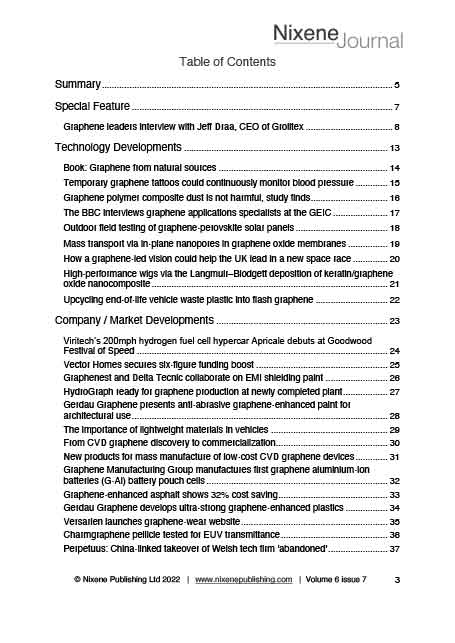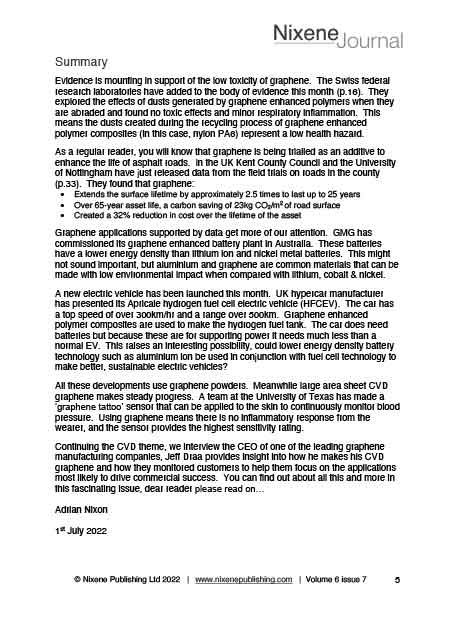Description
Evidence is mounting in support of the low toxicity of graphene. The Swiss federal research laboratories have added to the body of evidence this month (p.16). They explored the effects of dusts generated by graphene enhanced polymers when they are abraded and found no toxic effects and minor respiratory inflammation. This means the dusts created during the recycling process of graphene enhanced polymer composites (in this case, nylon PA6) represent a low health hazard.
As a regular reader, you will know that graphene is being trialled as an additive to enhance the life of asphalt roads. In the UK Kent County Council and the University of Nottingham have just released data from the field trials on roads in the county (p.33). They found that graphene:
• Extends the surface lifetime by approximately 2.5 times to last up to 25 years
• Over 65-year asset life, a carbon saving of 23kg CO2/m2 of road surface
• Created a 32% reduction in cost over the lifetime of the asset
Graphene applications supported by data get more of our attention. GMG has commissioned its graphene enhanced battery plant in Australia. These batteries have a lower energy density than lithium ion and nickel metal batteries. This might not sound important, but aluminium and graphene are common materials that can be made with low environmental impact when compared with lithium, cobalt & nickel.
A new electric vehicle has been launched this month. UK hypercar manufacturer has presented its Apricale hydrogen fuel cell electric vehicle (HFCEV). The car has a top speed of over 300km/hr and a range over 500km. Graphene enhanced polymer composites are used to make the hydrogen fuel tank. The car does need batteries but because these are for supporting power it needs much less than a normal EV. This raises an interesting possibility, could lower energy density battery technology such as aluminium ion be used in conjunction with fuel cell technology to make better, sustainable electric vehicles?
All these developments use graphene powders. Meanwhile large area sheet CVD graphene makes steady progress. A team at the University of Texas has made a ‘graphene tattoo’ sensor that can be applied to the skin to continuously monitor blood pressure. Using graphene means there is no inflammatory response from the wearer, and the sensor provides the highest sensitivity rating.
Continuing the CVD theme, we interview the CEO of one of the leading graphene manufacturing companies, Jeff Draa provides insight into how he makes his CVD graphene and how they monitored customers to help them focus on the applications most likely to drive commercial success. You can find out about all this and more in this fascinating issue, dear reader please read on…
Adrian Nixon
1st July 2022










